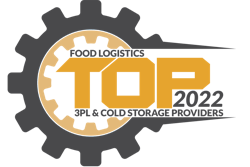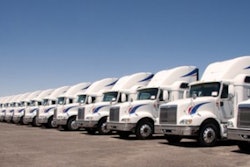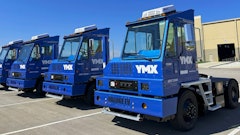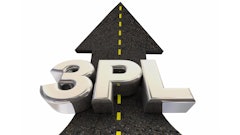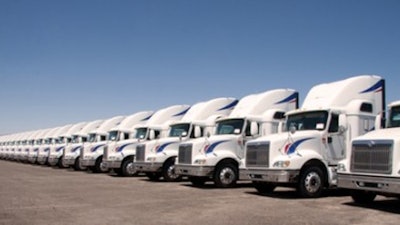
Recent Consumer Price Index (CPI) increases are making front-page headlines across the country, with impacts seen and felt in every industry, including supply chain management. Sure, rising CPI directly correlates to the cost of financing equipment, but it can also have a significant ripple effect on other cost centers, such as maintenance and repair (M&R). Knowing how to navigate this, as well as understanding the options, can potentially save millions toward an organization’s bottom line.
The CPI measures the price of many goods and services, including, groceries, restaurant meals, vehicles and more. According to a recent CPI report, price pressures remained elevated year-over-year. The CPI accelerated 8.3% in April, more than the 8.1% estimate and near the highest level in more than 40 years, according to CNBC.
Fleet executives dealing with inflation
One of the challenges fleets are facing today is that there has been little or no inflation for many years. There's a whole generation of fleet professionals who have never had to deal with the CPI increase. They negotiated with their vendors for a long time, and prices mostly remained stagnant. Now suddenly, they're seeing 2-4% increases and must evaluate their options to keep costs under control as much as possible. Moreover, they need to answer the C-suite and provide alternate options and recommendations.
How M&R is impacted by CPI increases
M&R is a significant area where cost control options exist. First and foremost, depending on the lease structure – full-service or unbundled – fleets may have an important choice when understanding what is included in their M&R costs. There are variable inputs that make up these costs and it’s not as simple as just looking at M&R as a single bucket, per se. Fleets must be able to dissect all critical M&R parts and components, such as tires, brakes, service and repair, etc.
Knowing your lease structure is important
Because of this, more fleet personnel are taking a closer look at unbundling their lease structure so they and their asset management partners can work with vendors and parts suppliers on the most cost-competitive components. However, in a full-service lease structure, fleets are confined to a single, bottom-line figure with little power in negotiating.
One of the most significant differences between an unbundled and full-service lease is how M&R costs are calculated. M&R is “front loaded” in an FSL. Companies can pay a minimum of .07 cents per mile in year one vs. .02 cents per mile when unbundling. All trucks have a two-year bumper-to-bumper warranty that can be extended to four years. Expenses for Year 1 include wearable items (tires, brakes) and preventive maintenance. A shorter truck life cycle produces long-term savings beyond the first year. In a UBL, the CPM average equals 5.675 cents over five years. However, in a full-service lease (FSL), fleets pay up to 9 cents per mile.
Rising CPI exacerbates this further since those rates are not flat. If the CPI increases, as it has recently, you will undoubtedly see an increase in your monthly payment.
Why it’s important to itemize M&R costs
However, when looking at each of those pressures fleet professionals have to deal with, they also have the internal pressures of explaining to their leadership. The fleet professional speaks for each individual cost center buckets – truck procurement, fuel, financing costs, M&R, etc. It becomes very difficult to pinpoint precisely where rising CPI is having the most significant impact on the bottom line. However, when fleet personnel have each cost center unbundled and broken out individually, they can go line item by line item and review efficiencies in each bucket – how are rising costs affecting our scheduled maintenance, preventative maintenance, tire and brakes replacement, etc.?
In many of these lease agreements, fleets have the maintenance included and additional time and materials on top. Therefore, they’re seeing the CPI increase in general and in parts that can be anywhere from 15-30% on the individual items. Parts availability and supply chain shortages further complicate this.
So, if a fleet typically runs 500 tractors, and there was an expected downtime of 8-10%, they've seen their parts costs increase and their labor increase when tied to a full-service agreement and the CPI increase. With an unbundled agreement, these fleets aren’t tied to any one part supplier in particular, freeing up the fleet organization to shop around for the best price and availability.
A plan and additional line-item visibility can make all the difference in the world in front of the leadership team. Fleet personnel should be able to address leadership and say, here's what we foresee happening; this is why maintenance is rising in relation to the rising CPI; this is why tire cost is rising; this is why fuel cost is rising; and here's what we plan to do about it. We're going to unbundle our leases and separate these payments to try to drive some efficiency and fuel/M&R sections. We're going to go back and look at our programs tied to CPI and see if we should renegotiate, and we'll look at different approaches to maintenance.
With this visibility, you can instill much-needed confidence in the leadership team despite the rising CPI rates and equipment supply challenges.
What’s more pressing for fleets locked in an FSL is the notion that few economists see the CPI rate declining significantly in the near future. Continued supply chain issues in the foreseeable future are expected to keep pressure on the cost of goods – heavy-duty trucks included – and this means these fleets won’t see any relief to their profits anytime soon, a business strategy that won’t please investors and other financial stakeholders. While locked in their current lease agreements, they would be wise to re-evaluate their longer-term truck acquisition strategies and begin planning for the right time to convert to a more flexible, bottom line-friendly unbundled lease structure.



